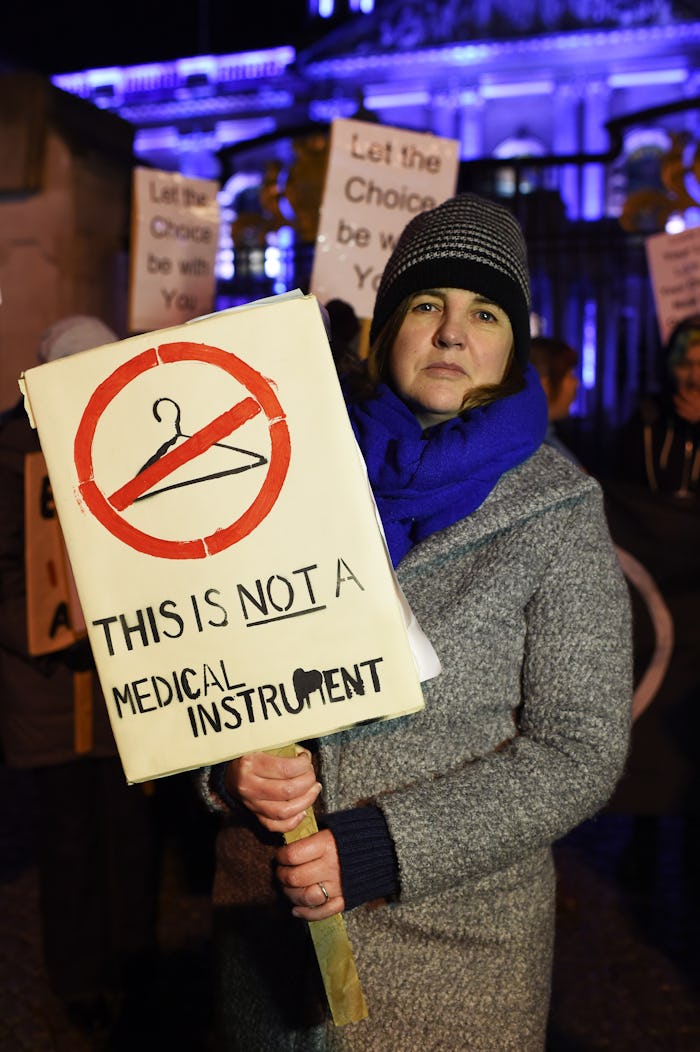News

Texas Stopped Funding Planned Parenthood & (Surprise!) The Birth Rate Rose
The latest news out of Texas Thursday was disturbing and troublesome, and was a prime example of “cause and effect” — you know, that thing your fifth grade science teacher tried to educate you about (and you got then, but some politicians fail to get now). When the state of Texas’ stopped funding Planned Parenthood, low-income women had more babies, according to a new study in the New England Journal of Medicine, cited by the Los Angeles Times. Am I surprised? No. Not at all. But I am saddened and disappointed, especially since one of the reasons lawmakers fought to defund the family planning program was to save money — more than $70 million dollars, according to USA Today.
In trying to cut funds and stop abortions (though Planned Parenthood provides so many other services), lawmakers make one glaring omission: by defunding Planned Parenthood and family planning centers across the state, many clinics were forced to closed. With limited access to birth control, and other medical care, low-income women who became pregnant had no other option but to carry and birth their babies. Once born, however, the question became, who is taking care of these children (not literally, but financially — because, again, these are low-income women)?
Let me be clear: I am not implying low-income women do not want children, or that these women in Texas are in any way unfit parents. In fact, I think the opposite is true: I don’t think these women are “failing” in any way, I think “the system” is failing them, and it has been since 2013, when the state ditched Medicaid and set up a separate state-funded "Texas Women’s Health Program." that program can legally withhold funds from any clinic affiliated with an abortion provider. Affiliated!
And, while only 23 of the 254 counties in Texas had Planned Parenthood clinics before 2013, according to the Los Angeles Times, those facilities served 60 percent of the state’s low-income women of childbearing age.
Unfortunately, when Texas cut funding from Planned Parenthood, the number of women serviced plummeted, the number of claims for long-acting contraception fell by more 33 percent, and the number of births paid for by Medicaid rose 27 percent, researchers reported:
This change is worrisome, since increased access to long-acting, reversible contraception methods is a priority of the American College of Obstetricians and Gynecologists, and one study has indicated substantial unmet demand for long-acting, reversible contraception methods in Texas.
Researchers also noted:
[There was] a “sharp decrease” in the use of long-acting reversible contraceptives in the counties that had been served by a Planned Parenthood...[when funding was cut]. These included intrauterine devices, or IUDs, which prevent sperm from fertilizing an egg for up to 10 years, and matchstick-sized implants that are inserted under the skin and release hormones to halt ovulation for up to three years. They also saw that demand for hormone injections, which prevent ovulation for three months at a time, “fell sharply” in counties that lost their Planned Parenthood clinics.
This means women and, specifically, low-income women were attempting to prevent pregnancy (for whatever reason) but when funding was cut, their access to contraception was cut. They lost their options. They lost access to choices, and they lost their rights. And while anti-abortionists and lawmakers would certainly argue this change is exactly what they were hoping for, I would argue this is a quality of life debate — not a quantity of life debate. (Not to mention a woman's-freakin'-right debate.)
But even if I remove women's rights from the table, and even if I remove religion and contraception and abortion from the table, I still see a problem, Texas. The state has created a system where women who many not be prepared to have children or do not want children are socially and economically forced into doing so. The state has taken away women's authority and their rights, and a population that is already underserved — low-income women and families — is being disproportionately affected.
Instead, Texas should simply let clinics and doctors do their jobs. The state should remove itself from the medical equation, and let health care providers provide medical care as they see fit.